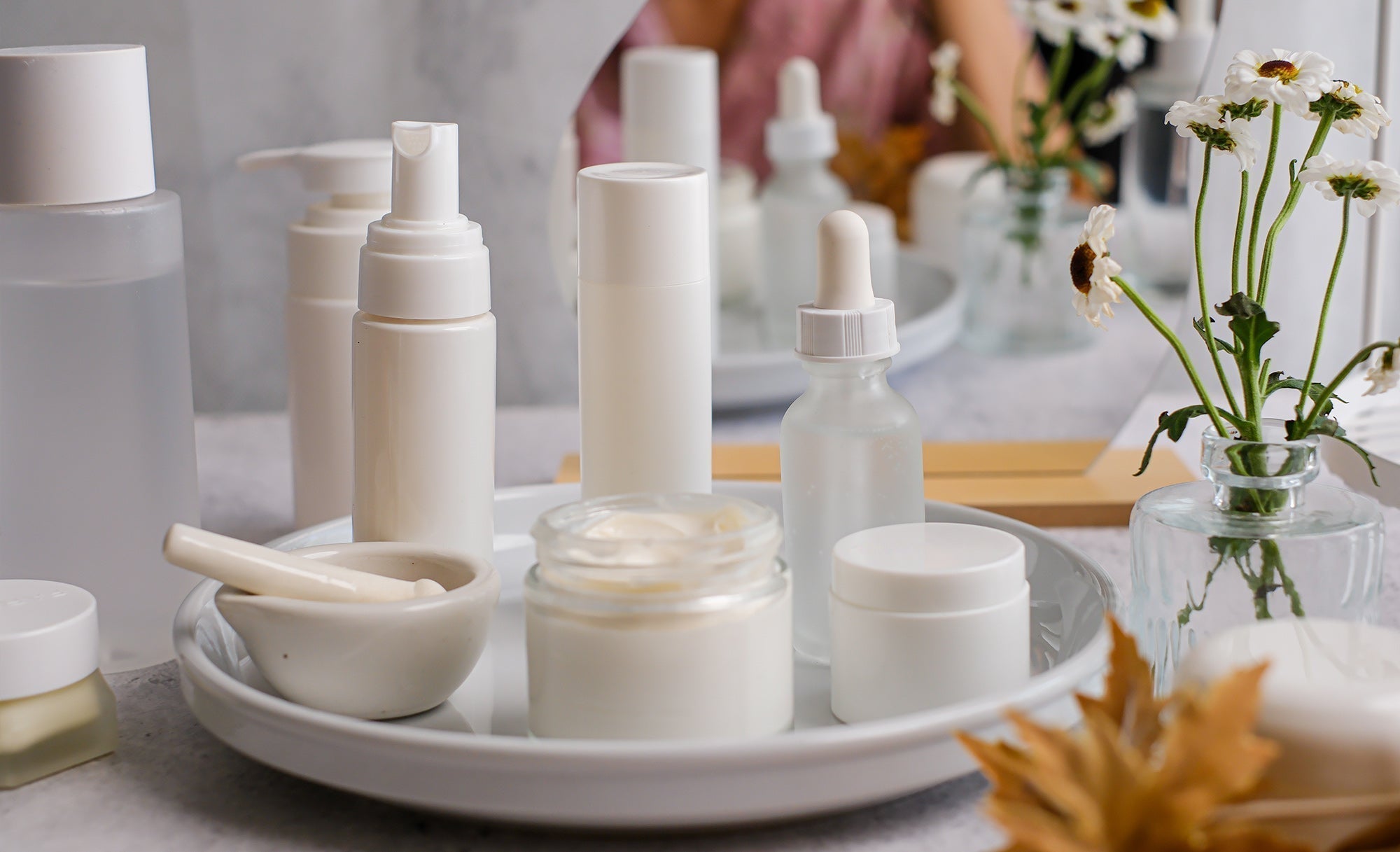Acne is one of the most common skin conditions, affecting millions worldwide. From occasional acne breakouts to persistent acne vulgaris, finding the right acne treatment can be overwhelming.
Among the many ingredients available, glycolic acid has gained significant attention for its effectiveness in treating acne. But is it the right option for your skin? In this latest blog, we explore the science behind glycolic acid, its benefits and how to incorporate it into your skincare routine for a clearer complexion.
What Is Glycolic Acid?
Glycolic acid is an alpha hydroxy acid (AHA) derived from sugarcane, known for its ability to exfoliate the skin by dissolving the bonds between dead skin cells. Due to its small molecular size, glycolic acid penetrates deeply into the skin, making it an effective solution for addressing various skin concerns, including acne. It works by improving skin texture, unclogging pores and promoting cellular turnover, which helps reduce the appearance of acne lesions and acne scarring.

Is glycolic acid good for acne? Yes, glycolic acid is beneficial for acne as it helps exfoliate dead skin cells, unclog pores and reduce acne breakouts.
How Glycolic Acid Works for Acne
Using glycolic acid can help manage acne in several ways:
Exfoliation
Glycolic acid removes the layer of dead skin cells that can clog pores and contribute to acne breakouts. This process also reduces the likelihood of new acne lesions forming.
Oil Control
For those with oily skin, glycolic acid helps regulate excess sebum production, keeping the skin’s surface balanced and less prone to breakouts.
Acne Scarring and Skin Texture
Glycolic acid products, such as glycolic acid peels, can improve uneven skin texture and minimise the appearance of post-inflammatory hyperpigmentation, especially in darker skin tones.
Prevention of Acne
By keeping pores clear and supporting healthy skin cell turnover, glycolic acid reduces the recurrence of acne breakouts.
Glycolic Acid vs. Other Ingredients
When exploring anti-acne formulations, it’s essential to understand how glycolic acid compares to other acne-fighting ingredients:
- Salicylic Acid: Known for its ability to penetrate oily skin and dissolve impurities within pores, salicylic acid works well in conjunction with glycolic acid for treating acne.
- Benzoyl Peroxide: Benzoyl peroxide can cause skin irritation, particularly for sensitive skin. This makes glycolic acid a gentler alternative for many individuals.

Is glycolic acid good for acne? It works by promoting faster cell turnover, which can improve skin texture and minimise the appearance of acne lesions and scars.
How to Use Glycolic Acid Safely
When applying glycolic acid, it’s crucial to follow best practices to maximise its benefits while minimising potential skin irritation:
- Start Gradually: Begin with a low concentration to allow your skin to adapt. Overusing glycolic acid can lead to redness or sensitivity.
- Combine with Complementary Ingredients: Pair glycolic acid with soothing and hydrating ingredients, such as hyaluronic acid, to maintain the skin barrier.
- Use Sunscreen: Glycolic acid increases skin sensitivity to UV rays, so applying sunscreen daily is essential to prevent further damage.
Recommended Skincare Routine with Allmedic Products
Achieving clear, healthy skin requires a comprehensive skincare routine. Here’s how you can incorporate glycolic acid products into your daily regimen:
- Step 1 - Cleanse: Start with the Allmedic Active Cleanser to remove excess oil and impurities caused by daily stressors like pollution and sweat.
- Step 2 - Exfoliate: Incorporate the Allmedic Active Exfoliating Scrub 2-3 times per week to clear clogged pores and reduce acne-causing bacteria.
- Step 3 - Repair and Hydrate: End the day with Allmedic Skin Repair to restore the skin barrier and soothe inflammation caused by acne breakouts or stress-related redness.
- Step 4 - Detox: Apply Allmedic Detoxifying Skin Lotion to clean skin in the morning. This product works overnight to detoxify, exfoliate and reduce acne scars.
Conclusion
Using glycolic acid as part of your skincare routine can be a powerful step toward achieving clearer, healthier skin. Whether you’re dealing with acne vulgaris, moderate acne, or post-acne scarring, incorporating high-quality glycolic acid products from trusted brands like Allmedic can make a noticeable difference.
If you’re ready to take the next step in your acne treatment journey, explore Allmedic’s range of skincare solutions to find glycolic acid products tailored to your needs. Always consult a dermatologist or a skin doctor if you have sensitive skin or specific concerns to ensure the best approach to treating acne.
FAQs
Can glycolic acid help with all types of acne?
Yes, glycolic acid can assist in the treatment of acne by exfoliating dead skin cells, unclogging pores and improving overall skin texture. However, for severe cases, it may be best used alongside other ingredients like salicylic acid or prescribed treatments from a skin doctor or dermatologist.
What other acids can be used with glycolic acid for acne-prone skin?
Malic acid, a milder alpha hydroxy acid, can complement glycolic acid by gently exfoliating and hydrating the skin. When used together, these acids provide a balanced approach to treating acne without over-drying.
Should I wear sunscreen when using glycolic acid?
Absolutely. Glycolic acid increases your skin’s sensitivity to UV rays, making it crucial to wear sunscreen daily. This helps protect your skin from sun damage and prevents post-inflammatory hyperpigmentation caused by acne.
Is glycolic acid safe for sensitive skin?
Glycolic acid can be used on sensitive skin, but it’s important to start with a lower concentration and gradually increase usage. Always monitor your skin for irritation and pair it with soothing products to maintain the skin barrier.


